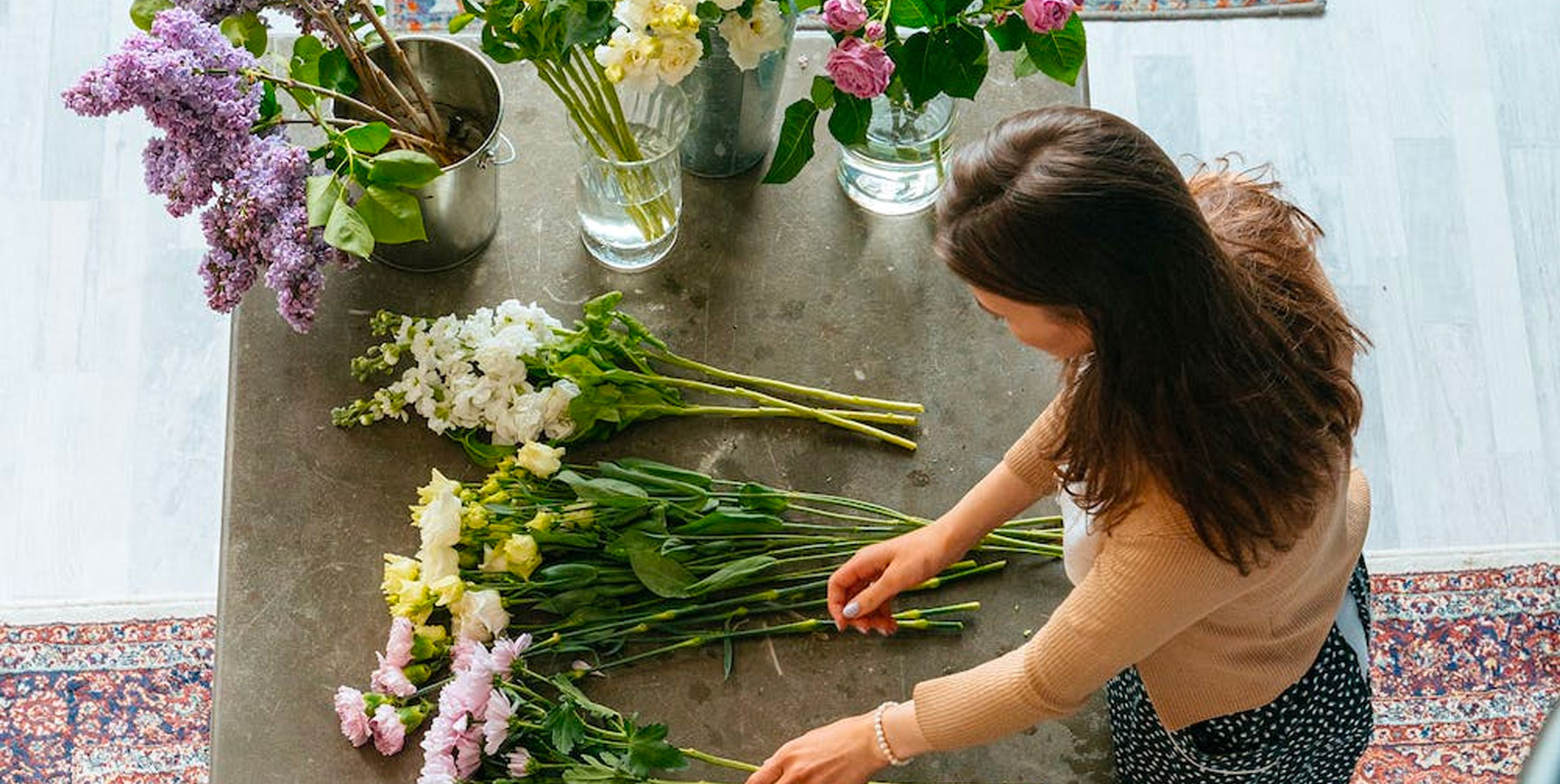How to Care for and Extend the Life of Cut Flowers
Fresh cut flowers bring beauty and joy into our homes, transforming any space with their vibrant colors and delicate fragrances. However, without proper care, these blooms can quickly wilt and fade. To ensure your cut flowers stay fresh and beautiful for as long as possible, follow these practical flower care tips on conditioning flowers, using preservatives, and arranging them to last longer.
Conditioning Flowers
Conditioning flowers is the first step to extending their life. Proper conditioning starts as soon as you receive or cut the flowers. As soon as you get your flowers, place them in water. If you’ve just cut them from your garden, bring a bucket of water with you to place the flowers in immediately. Trim 1-2 inches off the stems at a 45-degree angle using sharp scissors or a knife. This increases the surface area for water absorption and prevents the stems from sitting flat at the bottom of the vase, which can block water uptake. Strip any leaves that will be submerged in water since leaves left in water can rot, promoting bacterial growth that can shorten the life of the flowers. Fill your vase with lukewarm water, as it is more easily absorbed than cold water, except for bulbs like tulips and daffodils, which prefer cold water to stay firm. Finally, place the trimmed flowers in the vase of water and let them rest in a cool, dark place for a few hours before arranging. This helps them rehydrate fully.
Using Flower Preservatives
Flower preservatives can significantly extend the life of your cut flowers by providing essential nutrients and inhibiting bacterial growth. Use the packet of flower food that often comes with bouquets and follow the instructions for mixing it with water. You can also make your own preservative by mixing one teaspoon of sugar for nutrition, one teaspoon of white vinegar or lemon juice to maintain pH and prevent bacterial growth, and a few drops of bleach to kill bacteria. Mix these into one quart of water. Replace the water every 2-3 days, cleaning the vase thoroughly each time to prevent bacteria buildup, and replenish with fresh preservative solution each time.
Arranging Flowers for Longevity
How you arrange your flowers can also impact their lifespan. Place your arrangements in a cool spot, away from direct sunlight, heating vents, and appliances that emit heat. Keep flowers away from ripening fruits and vegetables, which emit ethylene gas that can accelerate wilting. Use floral tape or a grid made from tape over the vase opening to support heavier blooms and keep them upright, preventing them from drooping. If arranging flowers with different blooming times, select varieties that open gradually to ensure a continuous display of fresh blooms. Lightly mist your flowers with water daily to keep them hydrated and fresh. As individual flowers begin to wilt, remove them from the arrangement to prevent the spread of bacteria and help the remaining flowers last longer.
Extra Tips for Specific Flowers
For roses, recut the stems underwater to prevent air bubbles from blocking water uptake and remove any guard petals (outer petals) for a cleaner appearance. Keep tulips in a cool place and use a tall vase to support their stems. Adding a penny or a few drops of vodka to the water can keep them standing upright. Remove pollen from lily stamens to prevent staining and help them last longer. To rehydrate hydrangeas, submerge their heads in water for 10-15 minutes and then place them in the vase, changing the water daily. For orchids, use orchid-specific fertilizer and keep them in indirect sunlight.
With these flower care tips, you can enjoy the beauty of fresh cut flowers for a longer time. By properly conditioning your flowers, using preservatives, and arranging them thoughtfully, you can extend their lifespan and keep your home filled with vibrant, fragrant blooms. Embrace these practices, and let your floral arrangements continue to bring joy and elegance to your space for days to come.




